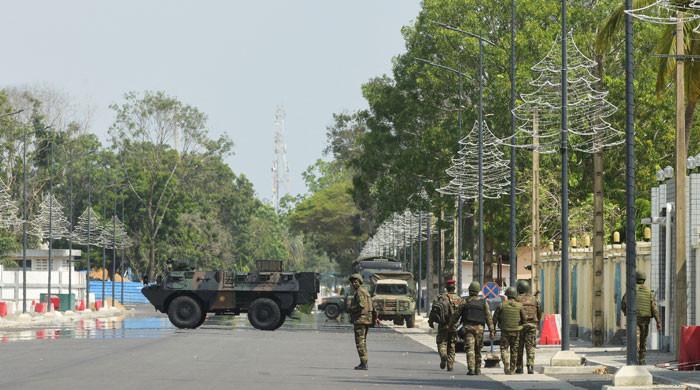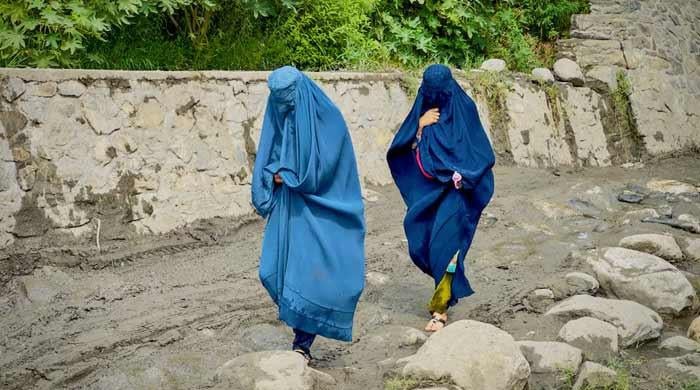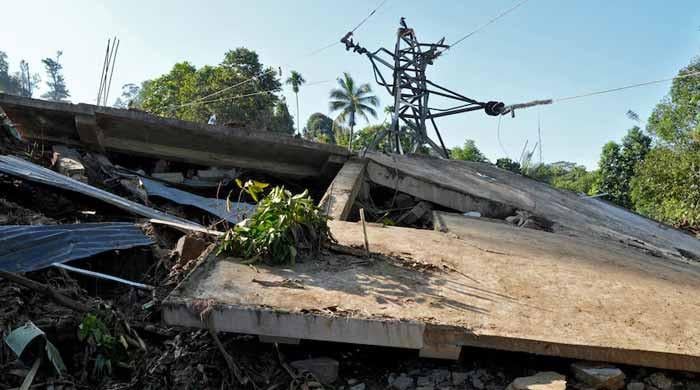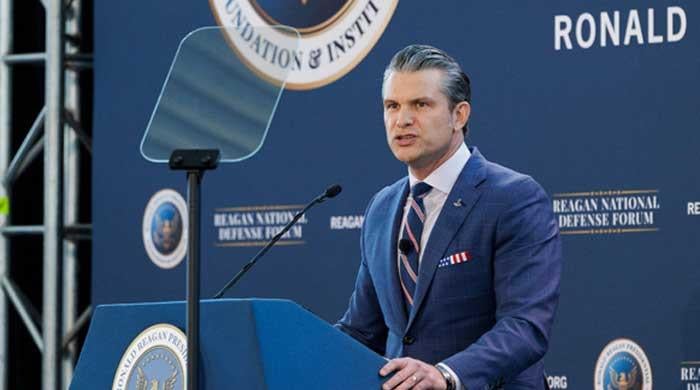Does Iran have nuclear weapons?
The Washington Post reports Iran has enough fissile material which if further enriched, will be enough for several nukes
June 15, 2025
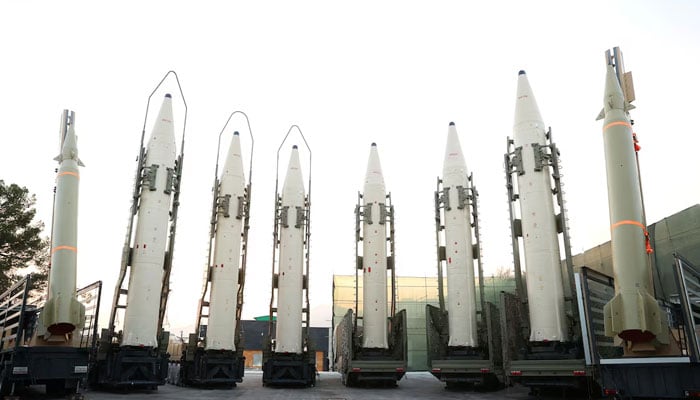
ISLAMABAD: Israel's attack on Iran, as argued by Tel Aviv was aimed at preventing Iran from developing nuclear weapons. Whether this is the case or not, a key question that this situation poses is whether Iran's lack of nuclear weapons poses an existential danger to the regime’s continued existence?
During its strikes, Israeli specifically targeted Iran's nuclear sites, and killed key scientists and top military brass.
Additionally — just hours prior to Israel's attack — the International Atomic Energy Agency (IAEA) determined that Iran was not adhering to its nonproliferation commitments.
In view of experts, one of Iran’s options in the wake of the strikes could be to continue developing nuclear weapons that Israel sees as an "existential threat".
"For many Iranian leaders, an Iran without a nuclear weapon (or the potential to have one) is an existential threat to the survival of the regime itself," said Kenneth Pollack, Vice-President for policy at the Middle East Institute in Washington.
"Israel has opened a Pandora's box: the worst Iranian response might also be the most likely, a decision to withdraw from its arms control commitments and build nuclear weapons in earnest," Kenneth Pollack’s analysis reflected.
Moreover, a recent IAEA report found that Iran enriched uranium up to 60%, which is a short technical step away from weapons-grade levels (which is often considered by the IAEA to be 90% uranium).
The agency said it couldn't verify the country's total uranium supply since 2021 but estimates it would be around 9,247 kg as of May 17, 2025. The amount of enriched uranium to 60% is 408.6 kg, the report continued. According to an article in The Washington Post, Iran has enough fissile material that — if further enriched — would be sufficient for several nuclear weapons.
"Iran now has a supply of highly enriched uranium that could be converted into weapons-grade fuel for at least three bombs in a time frame ranging from a few days to a few weeks", stated the article.
The latest Congressional Research Service (CRS) report on Iran’s nuclear Weapon Production states that numerous IAEA reports claim Iran has been producing batches of enriched uranium containing up to 2% u-235, up to 5% u-235, up to 20% u-235, and up to 60% u-235, respectively. It is pertinent to mention here that the Joint Comprehensive Plan Of Action (JCPOA) mandates restrictions on Iran’s declared enrichment capacity and requires that Iran’s enriched uranium stockpile must not exceed 300 kilograms of UF6 containing 3.67% u-235 "or the equivalent in other chemical forms".
The aforementioned JCPOA restrictions constrained Iran's nuclear programme so that Tehran, using its declared enrichment facilities, would, for at least 10 years, have needed a minimum of one year to produce enough weapons-grade HEU for one nuclear weapon.
The agreement does not explicitly mandate such a timeline. However, six years after the Trump administration’s controversial decision to withdraw from the pact, the restraints have fallen away, one by one, leaving Iran closer to nuclear weapons capability than at any time in the country’s history.
In March 2023, Mark Milley — US Chairman of the Joint Chief of Staff — testified that Iran would need "several months to produce an actual nuclear weapon". The question which arises now is what effect will Israel's attack leave on Iran in terms of producing nuclear warheads? This might be a billion-dollar question for many today.




